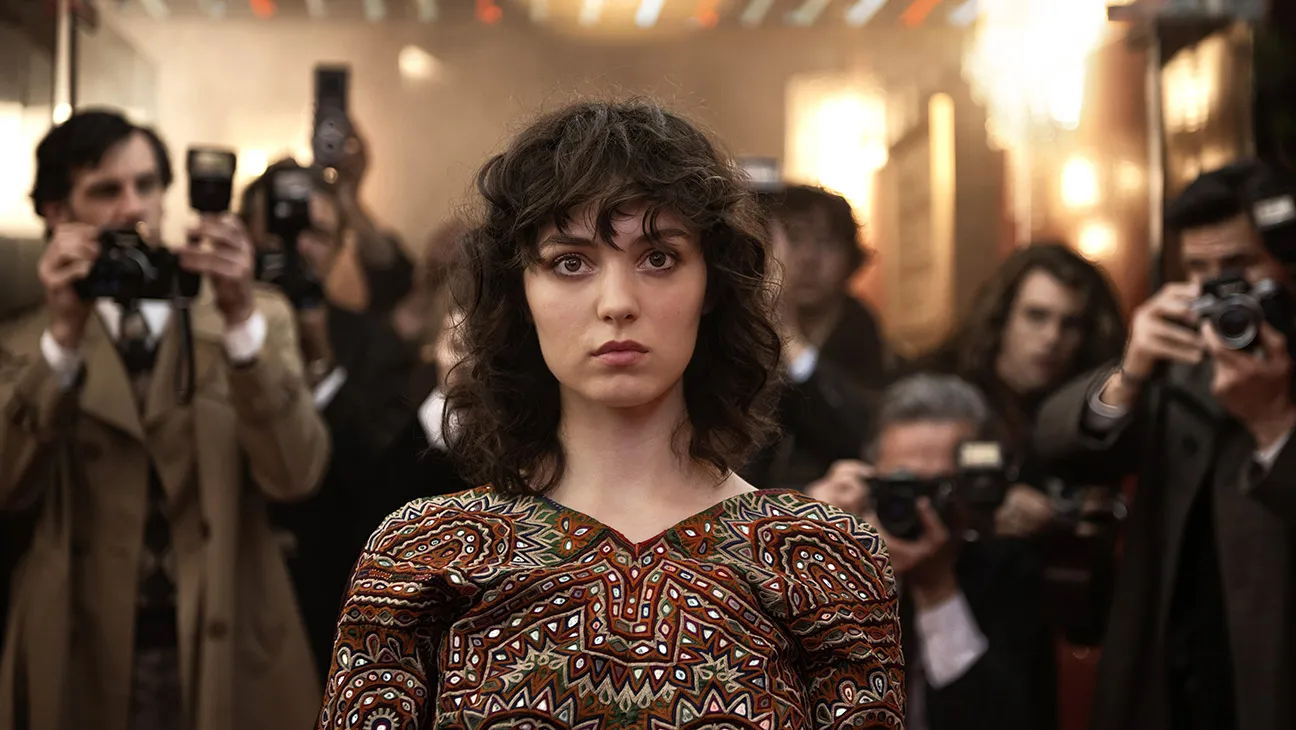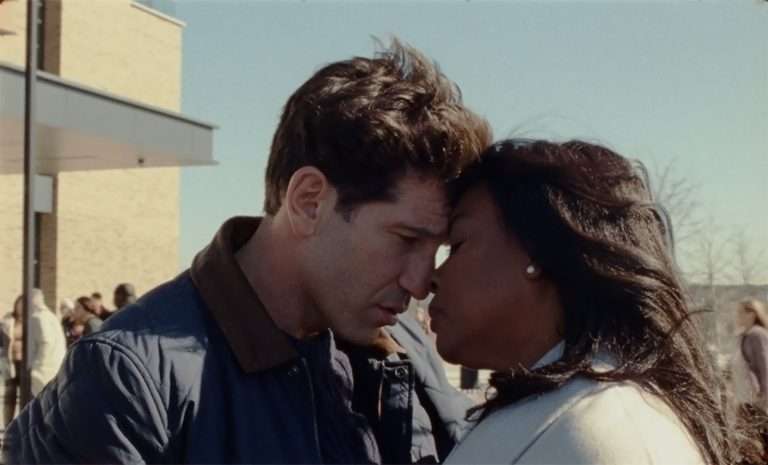Jessica Palud’s “Being Maria” (2024) takes a hard, unflinching look at one of film history’s most hotly debated scenes, the infamous ‘butter’ moment in Bertolucci’s “Last Tango in Paris.” The film has some of the most polarised reception ever, with most attention fixated on one scene when Marlon Brando’s character forces himself on Maria Schneider’s. The actress went on to call out the scene as being entirely improvised and being utterly abased by the moment, of which she had no foreknowledge.
Palud’s film, co-written with Laurette Polmanss, reckons with the impact of that particular scene, its earlier iterations in the life and larger career of the actress. Adapting loosely from the actress’ cousin’s memoir, this is by no measure a piercing, acute portrait of an artist in emotional duress but stays afloat somewhat on the commitment of its lead, Anamaria Vartolomei, who broke out with a Cesar-nominated turn in the Golden Lion-winning “Happening” (2021).
Being Maria (2024) Plot Summary & Movie Synopsis:
A Journey from Rejection to Stardom
Sprawling from 1967 to 1980, “Being Maria” picks up the actress’s life from when she was at the impressionable age of fifteen. Her father has been absent mostly, with her mother being her complete support system. However, when she tries to reach out to her father, a popular French actor, her mother flies into a rage. She accuses Maria of ingratitude. Can’t she see how her father abandoned her all this time? But Maria wants to have some time with her father as well, now that it seems doable.
However, her mother throws her out, pushing her to make a decisive choice without even giving her time and consideration. Maria finds refuge in her uncle Michel (Jonathan Couzinie), who inducts her into the world of film. Her father props her up with a start to a film career. Losing access to her mother, her profession gets a kick-start. Suddenly, opportunities present themselves because she happens to have a well-known actor for her father. Nepotism, when used effectively, can land a few gigs. Immersing herself entirely in the gig, she gets invited by Bertolucci to join his new film, “Last Tango In Paris,” as the lead opposite Marlon Brando.
Maria’s Ordeal on the Road to Ruin
The director reiterates it’s the tale of a physically intense relationship riddled with torment. There’d be much that’s needed of her, physically and emotionally. Is she okay with the nudity? As an actress starting out and lured by the possibility of the film opening several doors for her, she plunges right into the project despite some repressed inklings. During the shoot itself, the press is astir with heated speculation over the nature of the alleged scenes. Maria denies the scenes’ intensity, insisting they are of ample use and not just for titillation or provocation, as the media and general chatter are amping up.
As the shoot proceeds, there are ample indications of the director’s methods being horribly ruinous to the actress. It all leads up to the butter scene, leaving Maria shaken up. She wasn’t even aware the scene would go that far and in such a manner. She calls out the director, but he keeps reiterating that the best scenes spring from improvisation. To him, the actors aren’t humans, only characters whom he can manipulate and play around with at will. The emotional toll takes a backseat. He thinks Maria’s tears aren’t real.

As the film releases, there’s much furore, most of which is aimed at the actress. “They ran away”, she says of Brando and Bertolucci. Subsequently, most offers, except Antonioni, demand nudity as a casual part of the role, even if wholly unnecessary. She slips into heroin addiction, leaves many a set abruptly, and forgets lines. Quickly, she is blocked by the industry.
Being Maria (2024) Movie Ending Explained:
Does Maria choose to meet Bertolucci?
It’s only a relationship with Noor, a student pursuing a thesis, that uplifts Maria. Of course, there are many hurdles. Maria is resistant to help, begging for heroin. It takes a lot of tussling, hard persuasion, and constant work for Noor to extricate Maria from the mental slump. It’s a rocky emotional terrain that demands persistent attention and care. It can’t just be abandoned. Noor understands and is willing to give all her love, but the film barely sketches her character. Maria’s emotions, too, don’t register beyond rough outlines of distress and anger, and helplessness. These detract from the film’s sustained power, which accrues only in the pivotal scene.
In a hastened cut to the ending, a few years down the line, Maria is shown as more confident. She’s basking in the love for the Rivette film she’s just done. When her assistant raps her saying Bertolucci is next door at the hotel and asks if an interview is possible, all Maria says is that she doesn’t know the man. She has erased that association from her life, moving forward into whatever’s new for her. There’s a quiet strength in her assertion, but the film fails to develop the journey to this moment with any specificity or ache.
Being Maria (2024) Movie Review:
Anamaria Vartolomei is a fine, compelling actor who can dredge up great resources of emotional anguish. “Being Maria” rests on her mettle. However, the problem with the film is that it collapses into a sketchy series of scenes, painting the actress as nothing beyond lapsing into heroin addiction, sullen temper, and a bad reputation for abandoning productions midway. The best films provide a textured understanding of psyche, delineating rough oscillations, emotional abscess, how she grows through trauma and towards a restorative anchorage. Of course, some elemental pain may not go away permanently but linger in stealing sensations, rising unbidden.
Even though the ending suggests Schneider claws back to some resemblance of a career, the film doesn’t expand into a rich, humane understanding. Her vulnerability, agony are depicted in broad strokes, as a celebrity spiralling horribly. Did she have no friends at any point? Did just her relationship with Noor bring her back to a semblance of stability? The film gets too loosely defined, scattering out into vague, depthless snippets of emotional ruin. You get it, the director simply wanted to corral the film entirely around the definitive incident without quite knowing how to deal with the ashes. Hence, the crescendo in the final moment of Maria refusing to engage with the director doesn’t achieve its full impact.









